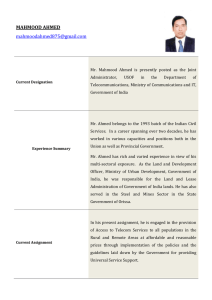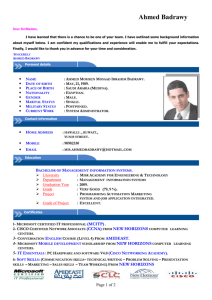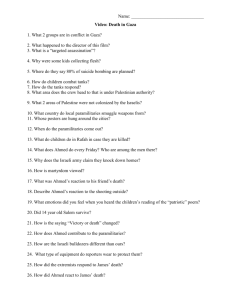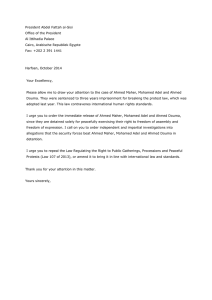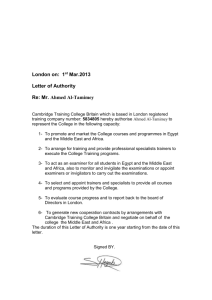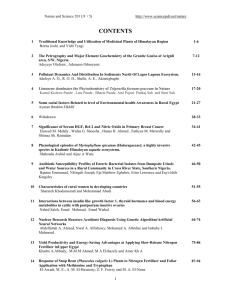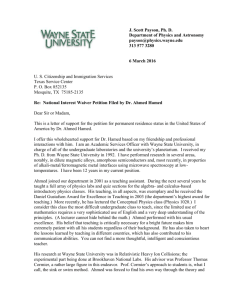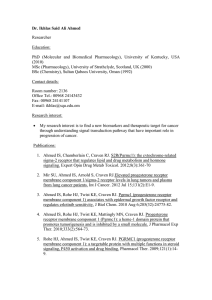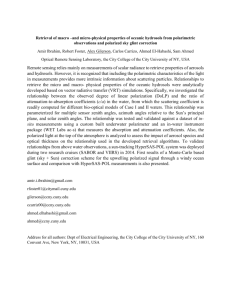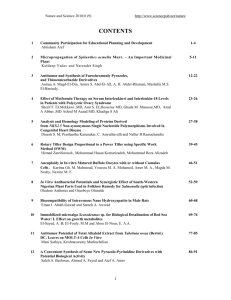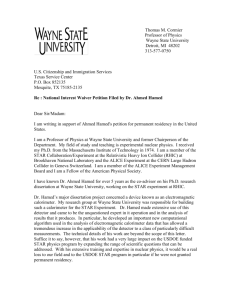View/Download - Boston University
advertisement
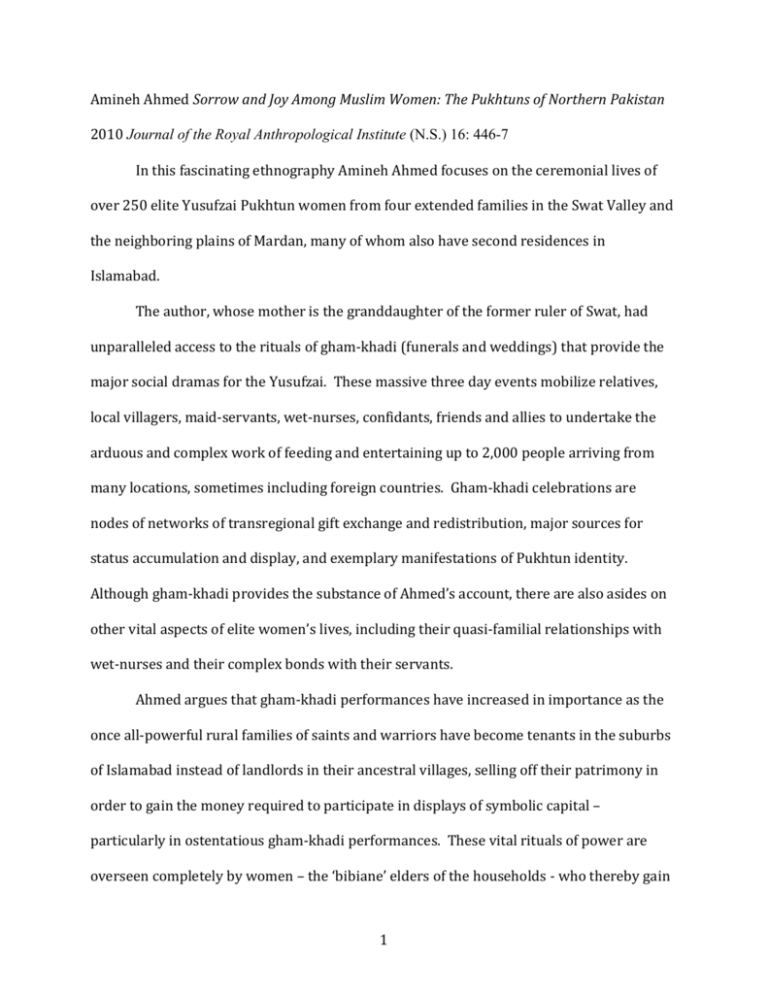
Amineh Ahmed Sorrow and Joy Among Muslim Women: The Pukhtuns of Northern Pakistan 2010 Journal of the Royal Anthropological Institute (N.S.) 16: 446-7 In this fascinating ethnography Amineh Ahmed focuses on the ceremonial lives of over 250 elite Yusufzai Pukhtun women from four extended families in the Swat Valley and the neighboring plains of Mardan, many of whom also have second residences in Islamabad. The author, whose mother is the granddaughter of the former ruler of Swat, had unparalleled access to the rituals of gham-khadi (funerals and weddings) that provide the major social dramas for the Yusufzai. These massive three day events mobilize relatives, local villagers, maid-servants, wet-nurses, confidants, friends and allies to undertake the arduous and complex work of feeding and entertaining up to 2,000 people arriving from many locations, sometimes including foreign countries. Gham-khadi celebrations are nodes of networks of transregional gift exchange and redistribution, major sources for status accumulation and display, and exemplary manifestations of Pukhtun identity. Although gham-khadi provides the substance of Ahmed’s account, there are also asides on other vital aspects of elite women’s lives, including their quasi-familial relationships with wet-nurses and their complex bonds with their servants. Ahmed argues that gham-khadi performances have increased in importance as the once all-powerful rural families of saints and warriors have become tenants in the suburbs of Islamabad instead of landlords in their ancestral villages, selling off their patrimony in order to gain the money required to participate in displays of symbolic capital – particularly in ostentatious gham-khadi performances. These vital rituals of power are overseen completely by women – the ‘bibiane’ elders of the households - who thereby gain 1 great authority in this purportedly patriarchal society. Yet with their new responsibility comes heightened anxiety. The bibiane are under intense pressure to participate in burdensome duties of near continual visiting and hosting, which they cannot escape without risking disgrace. Ahmed hints that the appeal of Islamic reform for some of these women is that it allows them to righteously repudiate onerous old values as hypocritical and sacrilegious. Of special interest in this book are the author’s portraits of actual gham-khadi celebrations, including the sequencing of events, the people involved, the amounts exchanged, and the stereotypical emotional expressions demanded of participants. Ahmed also shows that beneath the carefully maintained surface smoothness of hosting weddings and funerals are the hidden rivalries of daughters and their mothers on the one side, and incoming daughters-in-law on the other. She draws much needed attention to these female enmities (indrorwali), which are comparable in many ways to the famous antagonism between male patrilateral first cousins (tarburwali) that so marks the masculine world in Swat and Mardan. The book is well written; it is short and tight, yet full of good stories and clever insights. As is often the case with books derived from dissertations, there is a tendency to occasionally to set up straw dogs. For example, no one has ever argued that the women’s domain in this internally contentious society was a space of peace and harmony. The generally impressive bibliography omits works that might have been useful– most notably Zekiye Eglar’s seminal study A Punjabi Village in Pakistan, Shahla Haeri’s No Shame for the Sun: Lives of Professional Pakistani Women, and Peter Parkes’ important comparative research on ‘milk-mothers.’ There are also some aspects that are left out or that could be 2 expanded. We learn nothing of circumcision, which was once an important rite of passage. I would have like to have seen more statistical/historical material on the content of exchanges and a deeper analysis of marriage patterns over time - particularly rates of patrilateral parallel cousin marriage, which Ahmed says has declined. I’d like more on who marries whom, and why, and what causes the shifts in alliance? Ahmed mentions that there are now 40 court cases of elite women suing men over property rights. It would be fascinating to investigate these. These are not complaints – only a few indications of how rich the material is that Ahmed has begun to mine. As it stands now, her book is a serious and important contribution to the ethnography of the NWFP, to the study of elites, and to feminist anthropology. It documents a world that is changing rapidly, and that may well be on the way to extinction, ground to bits in the ongoing battle between the Taliban and the Pakistani state. However, Ahmed’s research shows that the ceremonial life of the Pukhtun is surprisingly flexible, that their values can shift without becoming shapeless, and that they are quite capable of adapting to changed circumstances while maintaining a strong sense of their own cultural integrity. This is a lesson I am glad to learn. 756 words Reviewed by: Charles Lindholm University Professor and Professor of Anthropology Boston University 3
